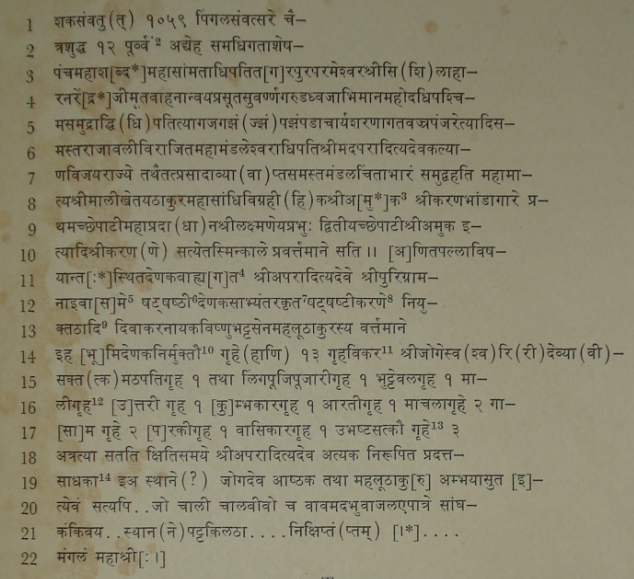|
The Indian Analyst
|
North Indian Inscriptions |
INSCRIPTIONS OF THE SILAHARAS OF NORTH KONKAN
Text[1]
TRANSLATION ..(Line 1) ‒In the Śaka year 1059 (and) the (cyclic) year Piṅgala, on the 12th (tithi) of the bright fortnight of Chaitra‒today, on the aforementioned (tithi), here‒
..
In the beneficial and victorious reign of the illustrious Aparadityadeva (I), the Mahāmaṇḍalēśvarādhipati, who is adorned with all royal titles such as the Mahāsāmantādhipati, ‘(he)
who has obtained the five mahāśabdas’, ‘the sovereign lord the city of Tagara’, ‘the illustrious
Śilāhāra king’, ‘(he) who is born in the family of Jīmūtavāhana’, (he) who has the banner
of the Golden Eagle’, ‘the great ocean of pride’, ‘the lord of the Western Ocean’, ‘a veritable
[1] From the photograph published in the Asia Major, (1926).
|
|||||||||||||||||||||||||||||||||||||||||||||||||||||||||||||||||||||||||||||||||||||||||||||||||||||||||||||||||||||
| > |
|
>
|








